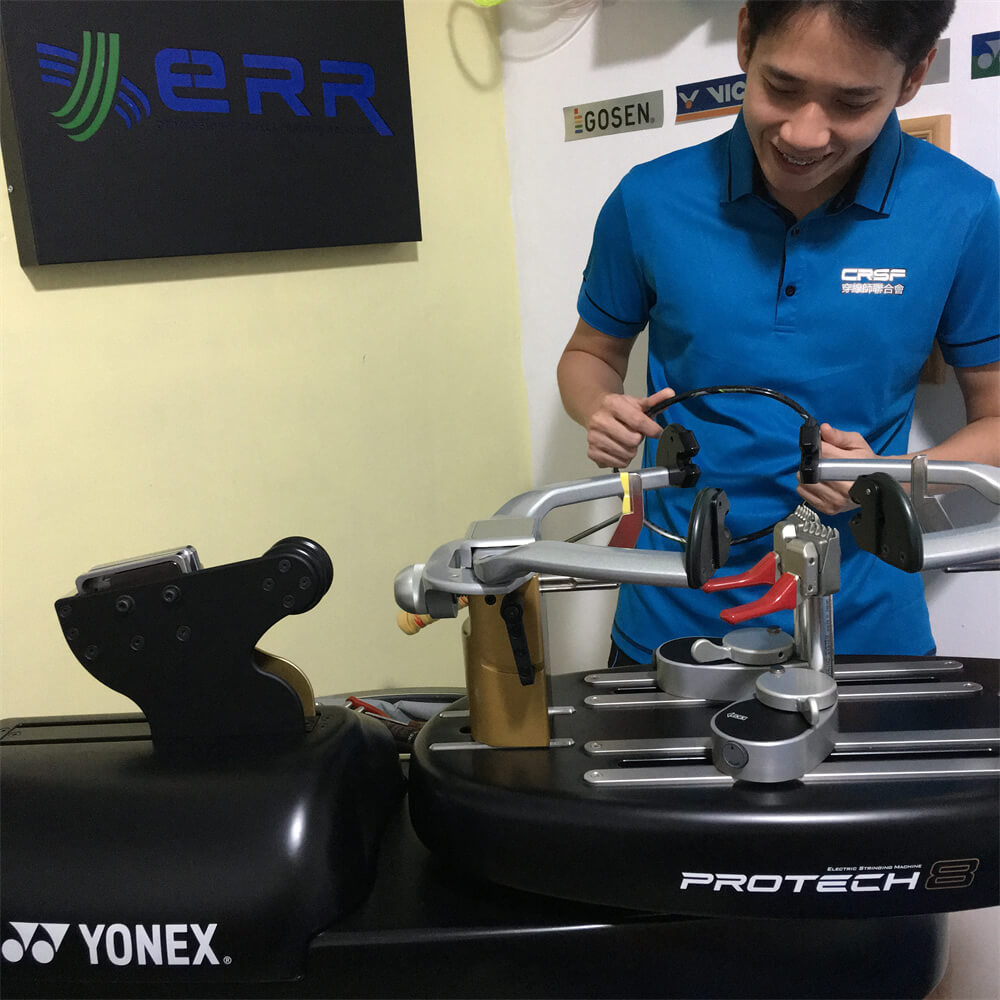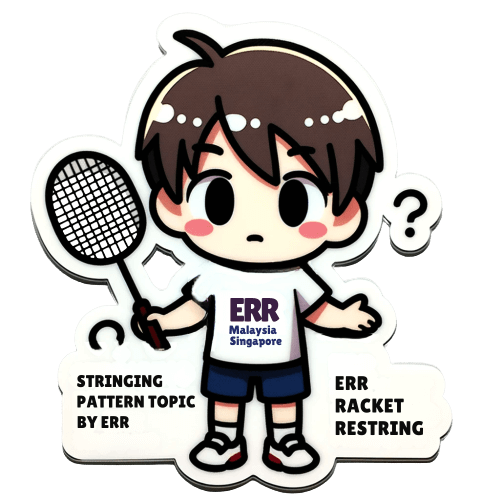
Stringing Pattern Topic Covered by ERR Racket Restring Malaysia
In Malaysia and Singapore, we believe many people often have doubts about stringing patterns. They wonder which stringing patterns can help improve their game, or if the stringing method can enhance the feel of their racket during play. Today, we will discuss the topic of racket stringing, specifically focusing on ERR Badminton Restring.
Our Professional Stringer, Mr. Eric, will explain each stringing pattern, highlighting what’s important and what might just be a marketing gimmick to extract more money. We are not motivated by profit in our stringing or badminton services; our words are based on the perspective of badminton players. We do not require any brand sponsorship for this discussion, and we will candidly point out the pros and cons of various stringing patterns.
Topics Discussion
- Insight into various stringing patterns by different brands
- Understanding the impact of stringing patterns on your game
- Guidance on choosing the right stringing pattern
- What to avoid when choosing a stringing service
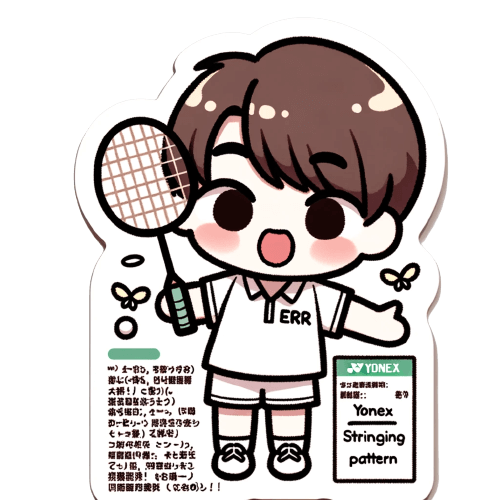
Yonex Stringing Pattern
The Yonex stringing pattern, in short, is one of the easiest and simplest stringing patterns, involving 2 pieces and 4 knots. Many people believe that Yonex stringing is of high quality and professional. In reality, Yonex stringing patterns are primarily designed for ease, speed, and consistency for both the stringer and the user. But is that a good thing?
To be honest, there isn’t necessarily a standout or excellent aspect to the stringing pattern itself. In fact, the quality of a stringing pattern isn’t the primary factor in determining whether it’s good or bad. The key to achieving a consistent and high-quality stringing pattern lies in the skill and foundation of the stringer. If the stringer possesses a strong foundation in stringing, regardless of the type of pattern, whether it’s 2 and 4 knots or another, they can still perform exceptionally well.
So, sometimes, don’t be fooled by the brand. Yonex’s success is a result of their focus on many aspects of sports, marketing, and a willingness to invest in making improvements. Therefore, don’t feel obligated to choose a Yonex Stringer just because you have a Yonex racket. It’s not necessary, even though many people in Malaysia or Singapore use Yonex as the primary reference for their stringing services. To be honest, it’s not the brand that matters; if you’re a skilled stringer with the right stringing pattern and logic, the outcome of the stringing can still be the best for the player.
What we need is to help the player perform better, not just string professionally without satisfying the player. This is what defines a professional stringer.
Yonex Badminton Racket Stringing Method
When it comes to Yonex badminton racket stringing methods, many people believe that Yonex rackets must always use Yonex’s specific stringing method. However, this is a misconception. In reality, Yonex badminton racket stringing follows a traditional approach where the main strings are strung from the throat to the head, followed by the interwoven cross strings.
So, if your stringer is Certified or Professional and has their unique way of stringing, it’s a good idea to let them try their method on your racket. You can then take it to the court and test how it feels, which is more important. If the stringing is done well, you’ll likely trust this stringer for future services. However, if the stringing doesn’t feel professional or you have any concerns, don’t hesitate to discuss it with the stringer for their advice.
But let me emphasize again, the stringer should be professional and certified. Avoid those older-generation stringers who use outdated pre-weave or old stringing methods. Consulting issues with them can be unhelpful, as they may shift the blame onto you rather than assisting you. Why? Because they haven’t learned proper stringing techniques, and they may have acquired their skills from sources or shops that aren’t qualified to train stringers. So, as the saying goes, ‘the first generation is wrong, and the next generation will be wrong too.’ This is why we always encourage our members and players to choose the right stringing services and foundation.
Eric’s Review on Yonex Vision and Yonex Stringing Patterns:
Regarding Yonex stringing patterns: Yonex has made significant efforts to simplify and speed up the stringing process while maintaining accuracy. This ensures that every Yonex Stringer enjoys a more straightforward yet high-quality stringing experience.
Yonex Vision: Yonex is an exemplary platform that uses its brand to support individuals, including players, stringers, and charitable initiatives. Even retired players like Dato Lee Chong Wei continue to receive sponsorship, reflecting a genuine love for the world of sports.
Yonex Stringers Support: The company also helps them design packaging to improve their reputation while promoting the Yonex brand. They conduct ongoing training for all these stringers. This is something I genuinely appreciate: a reputable sports brand that not only aims for profit but also understands that assisting people is a way of benefiting themselves. I truly admire this type of sports brand. Well done, Yonex.

Victor Stringing Pattern
Victor’s badminton stringing patterns mostly depend on the number of holes in the racket’s frame. They also offer stringing certification for their dealers who carry Victor products in their stores. However, they rarely conduct knowledge update training for stringing or any other aspects, except during product launches when they invite dealers. This is common because they aim to encourage their dealers to stock more Victor brand products, boosting sales.
In my opinion, the best Victor stringing team is still located in Taiwan. From my perspective, Taiwan’s stringing standards are quite good, and they are influenced by China’s stringing standards.
Victor Badminton Racket Stringing Method
From my perspective, Victor’s stringing method isn’t particularly special either. Their primary focus is on how to string rackets with varying hole counts, such as 70 holes, 72 holes, 76 holes, 80 holes, and 88 holes. Their main emphasis remains on stringing an empty frame up to the machine rather than using pre-weave techniques. There are no unique features or significantly improved playing experiences. While other brand stringers may try to highlight certain unique aspects, I don’t see any substantial or distinctive advantages in professional stringing.
Most brands design their own stringing methods and stringing patterns to encourage players to use their specific stringing styles, fostering trust in the brand. This strategy is not unique, as we commonly encounter it. Victor places more emphasis on design and marketing, resulting in many of their new products or shoes resembling those of other brands. So, regarding Victor’s badminton racket stringing method, I feel that there’s little to differentiate it from other stringing methods.
Eric’s Review on Victor Vision and Victor Stringing Patterns:
Regarding Victor stringing patterns: Victor’s stringing pattern is actually not bad; it’s easy to learn and understand.
Victor Vision: What I appreciate is that their material quality continues to improve. In the past, their rackets, especially the Victor Brave Swords and Thruster series, were known for their good quality and fame. However, they used to focus more on creating colorful designs and marketing, rather than on the quality of the racket materials. But now, it seems they are making improvements, which is a positive development for all badminton players to explore.
Victor Stringers Support: To be honest, they haven’t invested heavily in the stringing industry, perhaps because they don’t see it as their main focus for players. We often see many tournaments with Victor stringers, and their certification appears good, but it seems that no one is consistently updating it, which can lead to outdated practices. They haven’t made many improvements even when they identified weaknesses in stringing. However, we hope they will continue to make progress.
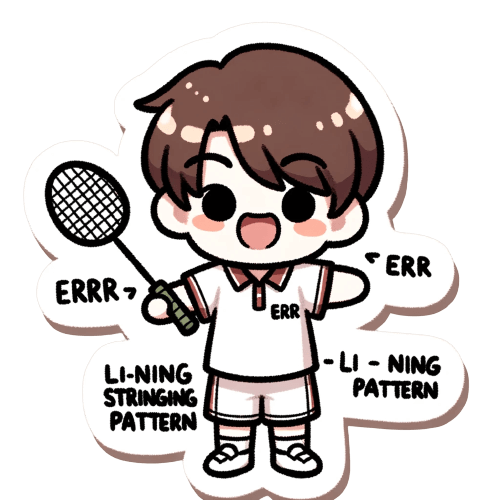
Li-Ning Stringing Pattern
Li-Ning’s stringing patterns are quite well-known, featuring both 2 knots and 4 knots options. Although their stringing patterns differ, their primary concern seems to be the speed of stringing. This is something I don’t particularly favor, as I believe in taking it slow during stringing to ensure perfect quality.
Perhaps they prioritize stringing speed to cater to those participating in international competitions, especially professional players. It’s about how quickly you can complete stringing and earn different honors like Gold Stringer and Silver Stringer certificates, which make you eligible for international or local competitions, respectively. While this concept may seem a bit unusual, Li-Ning’s stringer certification is widely recognized.
During the certification process, the organization often invites professional players to share their playing experiences. This likely aims to give the impression that Li-Ning’s stringing certification and patterns are more professional. In short, it appears to be a marketing label. However, the best stringing service should always prioritize meeting the unique needs of each player.
Li-Ning Badminton Racket Stringing Method
The Li-Ning badminton racket stringing method can actually be applied to many brands of rackets. Li-Ning rackets are known for their high-quality materials, so regardless of the stringing method you choose, as long as you use proper stringing techniques, the resulting string job will be perfect.
Therefore, don’t focus solely on the stringing method; instead, look for a professional stringer who can help you find the right string and racket. If the stringer is certified and professional, whether it’s Li-Ning racket stringing method or any other method, you will receive impeccable stringing services.
Eric’s Review on Li-Ning Vision and Li-Ning Stringing Patterns:
Regarding Li-Ning stringing patterns: Li-Ning’s stringing patterns also aim to be easy, fast, and accurate. However, they determine stringer certification levels based on completion time, which may not be suitable for older stringers and those who prioritize quality. As most stringers know, if the string is pulled too quickly, it can accidentally damage the string’s surface and reduce its durability.
Li-Ning Vision: What I admire about Li-Ning is their appreciation for their players. A few years ago, the entire China badminton team was sponsored by Li-Ning. To be honest, if Li-Ning didn’t provide substantial benefits and strong support, the China team wouldn’t have chosen them. Recently, Li-Ning ended its sponsorship of the China team, which shows they have a broader vision. According to many of my friends in China, they often praise Li-Ning as a great brand and manufacturer that consistently supports dealers and players. Personally, I also appreciate their rackets, as the quality is truly unmatched by many other brands.
Li-Ning Stringers Support: I have a lot of respect for Li-Ning’s actions. In the past, they held a Li-Ning stringing competition in China, and the champion received the white and gold color Li-Ning E8000 as a gift. I believe not many brands would do something similar. This is why most Li-Ning stringers continue to support and promote Li-Ning products because they are of high quality. Additionally, Li-Ning not only supports international competitions but also sponsors many medium and small events. All their country distributors in Malaysia and Singapore, especially Singapore, provide strong support for various events.

Gosen Stringing Pattern
Gosen’s stringing pattern is incorporated into the Haribito stringing project, which offers two types of stringing methods: Haribito Basic stringing pattern and Haribito Professional stringing pattern. However, many professional stringers have expressed doubts about the Haribito Professional stringing method, as it has led to numerous instances of cracked frames. While they were very active a few years ago, it appears that they have ceased conducting training and updating stringing knowledge.
In my opinion, the Haribito stringing pattern has its merits but also some weaknesses, particularly in making things overly complicated and potentially causing harm. We understand the importance of elevating stringing patterns to a more professional and higher standard, but sometimes their approach may have the right logic but doesn’t yield easy to achieve results. If they genuinely aim to become the new industry standard in racket sports, they need to persist with the Haribito project until it reaches perfection.
Gosen Badminton Racket Stringing Method
Gosen’s badminton racket stringing method is designed to work with the Gosen basic stringing pattern. However, Gosen rackets can actually be paired with any type of professional stringing pattern. So, don’t hesitate to use any stringing method with Gosen badminton rackets.
In fact, Gosen has a history of assisting many sports brands in producing labels using their own factory, as they have a strong focus on manufacturing private labels due to their extensive experience. Therefore, there’s no doubt about the quality of their rackets.
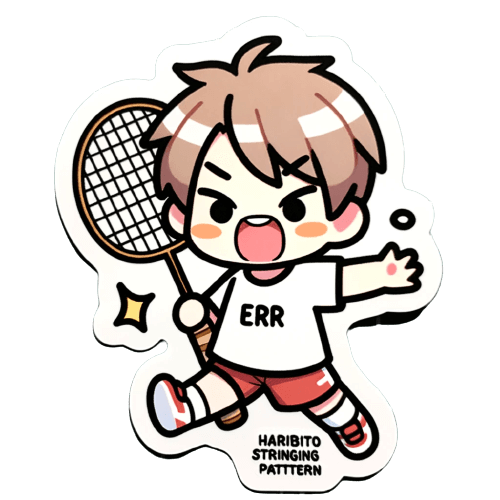
Haribito Stringing Pattern
The Haribito stringing pattern is unique and appears professional. In the past, there was an experienced stringer with a white beard; some experienced stringers might be familiar with him. However, it’s fair to say that the Haribito professional stringing pattern still needs improvement. Nowadays, apart from China Hong Kong, very few people use this stringing method due to its complexity and some instances of frame breakage, the causes of which remain unknown.
They continue to set high standards for stringing, but education and updates have been lacking for some time. This isn’t beneficial for their stringers who are still operating with knowledge from three to four years ago.
Eric’s Review on Gosen Vision and Gosen Stringing Patterns:
Regarding Gosen stringing patterns: Gosen’s stringing patterns, including Haribito professional and basic, are considered professional stringing methods by their standards. However, for less experienced stringers, they can be quite complicated. In my opinion, a good stringing pattern should be accessible to all stringers and players, rather than adding unnecessary complexity. I hope they continue to work on improving this.
Gosen Vision: Gosen is a manufacturer with a strong background. They have a history of producing badminton rackets for other brands and have their own production lines, predating Yonex. Recently, Gosen has started launching new strings like the Gosen 0.58mm, which is a positive sign that they are continuing to develop new sports products, especially in badminton.
Gosen Stringers Support: While Gosen’s Haribito stringing certification has been considered a higher standard in the industry for many years, it has helped stringers build their reputation. Stringers who pass their certification can proudly display a poster in their shop, labeled as a “张人店.” This practice has both advantages and disadvantages. On the one hand, it boosts a stringer’s reputation and gives customers more confidence in getting their rackets strung. However, their stringing education has been halted for several years. I hope they can find someone to take over and update the stringing knowledge.
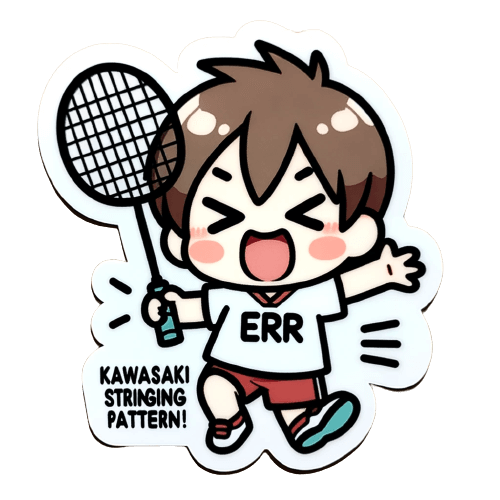
Kawasaki Stringing Pattern
Kawasaki’s stringing pattern is actually quite easy and effective. It’s worth noting that Kawasaki has established its own stringing association called “ARSF,” and the stringing courses are conducted by a Chinese man who created the SZ stringing pattern. When I think of Kawasaki, I only associate it with Li Mao, the famous badminton coach. Apart from him, it seems like no international players are sponsored by Kawasaki.
Kawasaki Badminton Racket Stringing Method
Kawasaki has recently launched a significant number of new products, indicating their continuous improvement in the badminton sports business. Some of their rackets are quite unique, and the hole patterns can differ from what we typically find in brands like Yonex. Therefore, the Kawasaki badminton racket stringing method still needs to be determined based on the specific design of the racket before making a decision.
Eric’s Review on Kawasaki Vision and Kawasaki Stringing Patterns:
Regarding Kawasaki stringing patterns: Kawasaki’s stringing patterns are actually not bad, and they have unique features that can convince stringers and players to use their stringing patterns. It’s relatively easy for stringers, and the results are decent as well.
Kawasaki Vision: Sometimes, I feel that Kawasaki’s vision is not entirely clear. Some parts of the company focus on stringing courses, while in some countries in Europe, they concentrate more on other sports. This can lead to instability in their calculations and business goals, possibly because they view badminton as a side income. It’s well-known that Kawasaki earns money from other industries besides sports. In Asia, including Singapore and Malaysia, many of their dealers don’t even have proper websites to showcase their products, which is quite disappointing.
Kawasaki Stringers Support: From 2016 to 2023, Kawasaki Stringers “ARSF” Asia have been quite active in conducting badminton stringing in China. However, their product information is lacking, and it seems like they haven’t invested much in marketing compared to Victor, Li-Ning, and Yonex. If they are truly committed to this sport, they should address these issues I mentioned. While their certification from ARSF may not look very presentable, the course instructors have extensive experience in stringing. That’s why we can see Kawasaki stringers continuously improving, but their product marketing and descriptions still need enhancement.
Unfamous Brand Two knots Stringing Pattern
To be honest, without all these brands competing in stringing methods, or stringing associations determining which is better, stringing is actually quite straightforward. As long as a stringer is well-trained in the fundamentals of stringing, much like the foundation of playing badminton, they can execute any stringing pattern effectively, and the quality of the outcome will remain excellent, regardless of the chosen stringing method.

There are numerous stringing patterns from different brands, such as the KEPOT stringing method, Shuai Zhu (SZ) and others. Just because they are not well-known doesn’t mean they are not good. Players should try out various stringing methods and rackets to see if they suit their needs before passing judgment. As professional stringers, we don’t claim to be the best without exploring the current market. We continually update our knowledge, and as a player, you should do the same.

All around the World Stringing Pattern
You may have heard a lot about the ‘All Around the World’ stringing pattern in badminton. However, in reality, ‘All Around the World’ simply means that the string is woven in a way that goes around the world. But in practice, ‘All Around the World’ still involves using a single piece of string with two knots to complete the string job. So, don’t be confused if a professional stringer tells you that they are using the ‘All Around the World’ stringing pattern.

What Badminton Strings & Stringing Pattern Should I Choose?
To be honest, if a stringer has a strong foundation in badminton stringing, the specific stringing pattern isn’t a major issue. The stringing pattern is just a different technique for weaving the string and completing the job. Ultimately, it depends on the stringer’s understanding of your needs and their ability to provide you with the desired outcome.
You should not believe that a stringing pattern can significantly enhance your playing experience. Instead, you should have faith in a stringer who possesses a solid stringing foundation and a genuine passion for stringing your racket. In our case, ERR members often share their experiences with us, and we always work together to resolve any issues. We believe in continuous learning, and even though our stringer is the only Master Racquet Technician in this large country of Malaysia, we always strive for improvement.

Racket Strings can last longer is that because of Stringing Pattern?
No, in reality, if the stringing pattern makes sense and is done by a professional stringer, the durability of the string should primarily depend on your usage rather than the stringing pattern itself. However, some stringers who are not certified or lack a strong foundation in stringing may use patterns like preweave or factory stringing methods, which could potentially reduce the lifespan of the string.
As a player, it’s important for you to assess whether a stringer is skilled or not. The fact that a sports store is open doesn’t necessarily mean they are good, and even having a stringing certificate doesn’t guarantee someone is a professional stringer. Therefore, always remember that a good stringer is dedicated to helping their players find the right string and stringing method to enhance their performance and overall experience.

How to make racket Strings last longer?
In short, you should initially choose a professional stringer, not a casual one. Secondly, you need to understand why your strings are breaking easily. Is it due to using the wrong type of string, inconsistent hitting points on your shots, improper stringing by the stringer, calibration issues with the stringing machine, accuracy problems with the machine, or even environmental factors like high or low humidity?
All of these factors are possibilities, and you need to investigate to find the answers. By doing so, you can discover how to extend the lifespan of your racket strings. I hope this information is helpful.

How to choose string and stringing pattern as professional players?
As a professional badminton player, what we hope for is to get a good stringing that can complement our skills. We require consistency in our shots, minimizing mistakes, and having excellent control. Therefore, it’s important to find a skilled and professional stringer who can assist you with stringing. You should communicate your skill level and concerns to the stringer, allowing them to address your specific issues. This way, you can focus on your training, while the stringer concentrates on enhancing your playing experience and aligning with your current skills.
Many professional players work hard to maintain their fitness and skill levels. For them, having a consistent stringbed or what we call a high-quality professional stringing is of utmost importance. Regardless of the stringing pattern professional badminton players choose, as long as the stringbed offers consistency, meets their needs, and improves their playing experience, that is what matters most for a stringer.

How to choose string and stringing pattern as Intermediate Players?
If you are an intermediate player, choosing the right string and stringing pattern is quite important. Don’t ever think that having good badminton skills means it doesn’t matter if the string is of low quality or if the stringing pattern is as you can still get used to it. This is a misconception. In reality, for intermediate players, the choice of string and stringing pattern is very important in helping you improve your game to a higher level. So, be willing to try new things to bridge your gaps, achieve the right feel, and continue progressing to higher or maintain your skill levels.

How to choose string and stringing pattern as Casual Players?
As a casual player, choosing the right string and stringing pattern is quite important. If you select the wrong string, incorrect tension, or have the stringing done by a casual stringer, it can lead to doubts about your own skills and injury. You might not be sure if the issue lies with your skills, the equipment like your racket or string, or if your opponents are too strong. This confusion can make it challenging to find a better playing experience in badminton for casual players.
Imagine the situation getting messy for a casual player who treats everything in their weekly badminton sessions as acceptable. In such a scenario, your skills level may continue to drop. Therefore, we recommend having your stringing done by a professional stringer and seeking their advice on the right string and tension for you. This can greatly benefit you. Once your stringing and equipment are in the hands by professionals, any issues that arise during your weekly badminton games, such as stamina not good, improper footwork, or the need for skill training, will become more apparent and easier to address, rather than everything becoming chaotic.
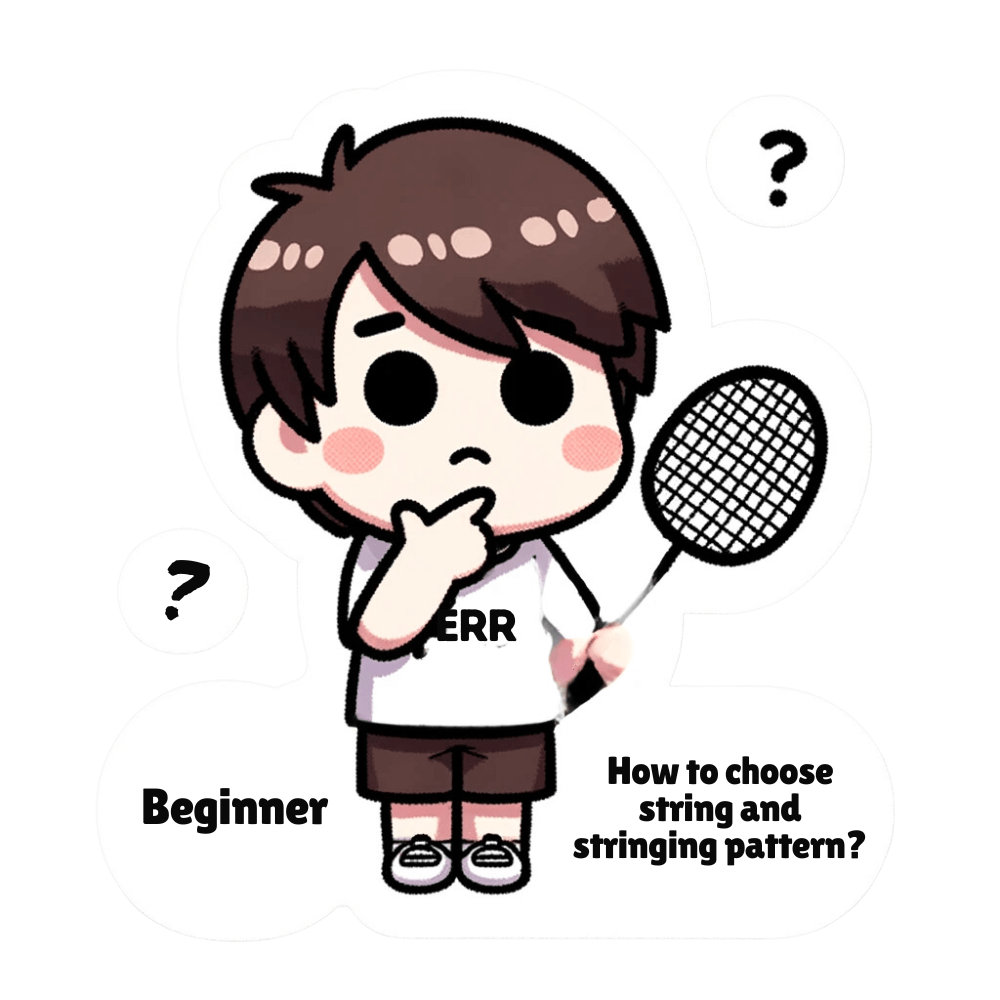
How to choose string and stringing pattern as a beginner?
For beginners, if you have access to a professional stringer, feel free to ask them all your questions. However, it’s crucial to choose a stringer with both professionalism and good character. Avoid those individuals in sport stores in Malaysia and Singapore who keep pressuring you to change this or buy that, which can result in unnecessary expenses. Instead, opt for a stringer with a good reputation and seek their advice. Trust their recommendations, as sometimes, when we lack knowledge about something, we tend to guess or become suspicious of being cheated.
Consider it this way: if the cost isn’t too high, even if they were to cheat you once, they would lose you as a customer for good. So, their interests are aligned with providing you with the best advice and service. It’s a win-win situation.

Can I select a professional stringing pattern as a beginner?
If you are a beginner and want a perfectly strung racket to play better or simply to protect your badminton racket, professional stringing is your best choice, to be honest. When you visit casual sports stores, the advice you receive can be unprofessional, and they might take advantage of your lack of knowledge, especially since you’re a beginner.

Our advice is to seek out a professional stringer who can help you choose the right racket and provide professional stringing. Don’t be hesitant, as everyone starts somewhere, especially when it comes to professional stringing in badminton.
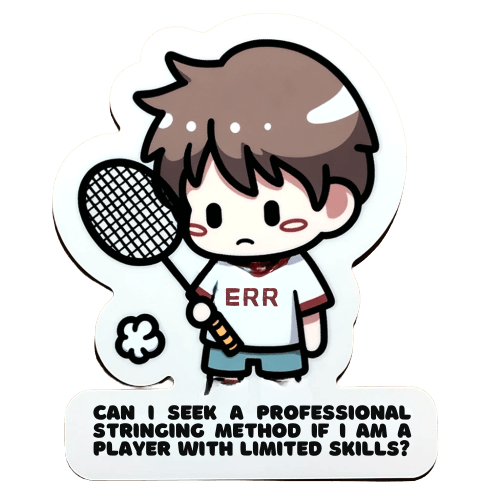
Can I seek a professional stringing method if I am a player with limited skills?
Yes, if you choose a professional stringing method, the stringer will take care of everything for you, so you don’t need to worry about stringing problems, especially if the stringer is unprofessional. The only thing you need to do is improve your skills or continue enjoying your badminton game. If any issues arise, consult with the professional stringer, and they can easily help you resolve your problems.

Imagine if you get your stringing done at a casual sports store. When you encounter issues, they will often push the responsibility back to you and may not provide a professional solution. How unfortunate that would be.
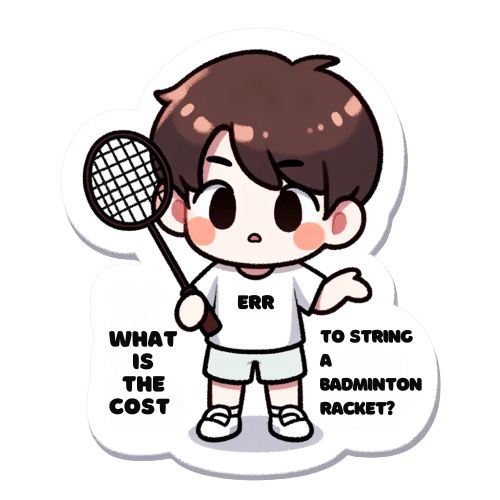
What is the Cost to String a Badminton Racket?
If you’re seeking professional stringing services in Malaysia or Singapore, you can always compare prices at ERR Badminton Restring professional stringing string list to get an idea of the costs involved. Don’t let their certification or the size of their store convince you to pay a higher stringing cost. Make sure they are truly a good stringer and have a passion to help you play better.
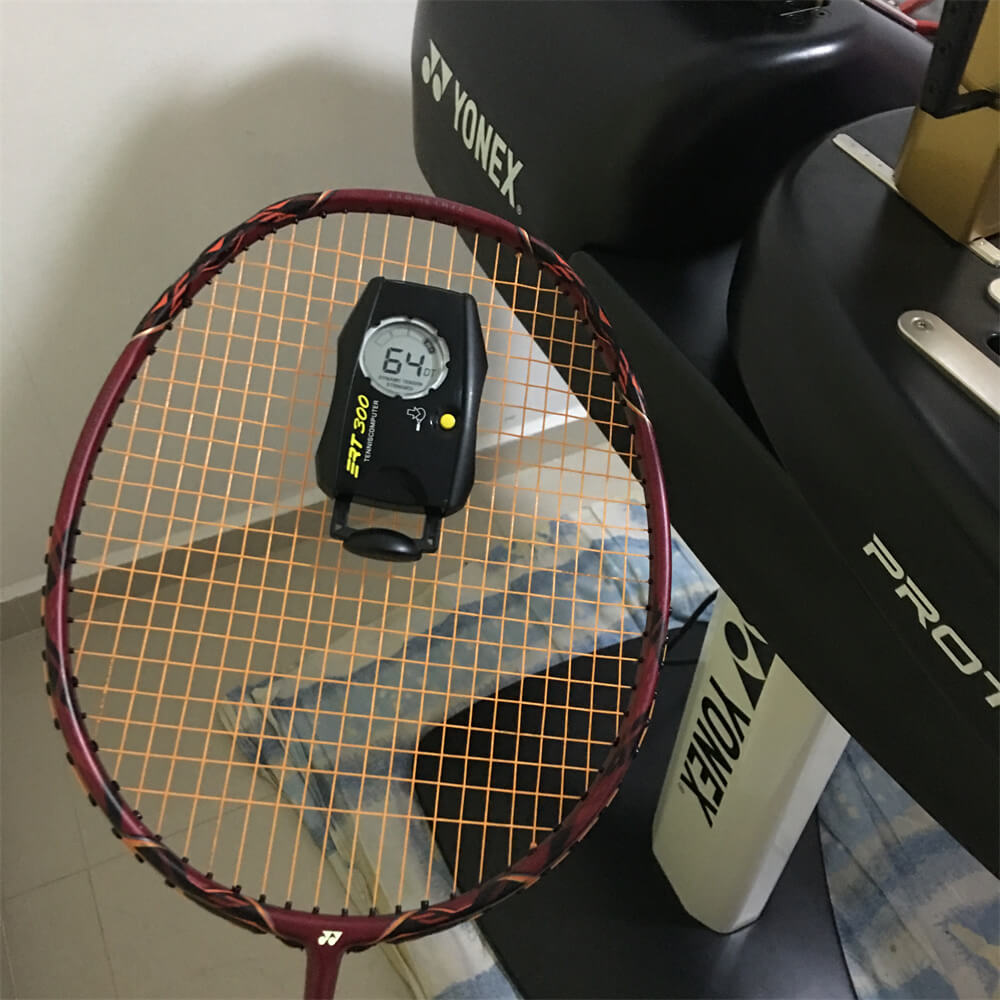
Professional Stringer Advice to Players
Lastly, our advice as professional stringers to all the players in Malaysia and Singapore is not to overfocus on stringing patterns. What’s most important is how you feel after the stringing is completed. You should try it on the court. Regardless of how professional the stringer is, if you’re not satisfied with the feel, consult with the stringer about your concerns. If the stringer isn’t qualified, look for a professional stringer, as this can help you reduce issues. If you have any inquiries, please feel free to submit your questions to our ERR Stringing Education. We will do our best to provide answers. Thanks for reading!
